
| Version | Summary | Created by | Modification | Content Size | Created at | Operation |
|---|---|---|---|---|---|---|
| 1 | Sirius Huang | -- | 1206 | 2022-10-12 01:33:50 |
Video Upload Options
A folk dance is a dance developed by people that reflect the life of the people of a certain country or region. Not all ethnic dances are folk dances. For example, ritual dances or dances of ritual origin are not considered to be folk dances. Ritual dances are usually called "Religious dances" because of their purpose. The terms "ethnic" and "traditional" are used when it is required to emphasize the cultural roots of the dance. In this sense, nearly all folk dances are ethnic ones. If some dances, such as polka, cross ethnic boundaries and even cross the boundary between "folk" and "ballroom dance", ethnic differences are often considerable enough to mention.
1. Background
Folk dances share some or all of the following attributes:
- Dances are usually held at folk dance gatherings or social functions by people with little or no professional training, often to traditional music.
- Dances not generally designed for public performance or the stage, though they may later be arranged and set for stage performances.
- Execution dominated by an inherited tradition from various international cultures rather than innovation (though folk traditions change over time).
- New dancers often learn informally by observing others or receiving help from others.
More controversially, some people define folk dancing as dancing for which there is no governing body or dancing for which there are no competitive or professional institutions. The term "folk dance" is sometimes applied to dances of historical importance in European culture and history; typically originating before the 20th century. For other cultures the terms "ethnic dance" or "traditional dance" are sometimes used, although the latter terms may encompass ceremonial dances.
There are a number of modern dances, such as hip hop dance, that evolve spontaneously, but the term "folk dance" is generally not applied to them, and the terms "street dance" or "vernacular dance" are used instead. The term "folk dance" is reserved for dances which are to a significant degree bound by tradition and originated in the times when the distinction existed between the dances of "common folk" and the dances of the modern ballroom dances originated from folk ones.
2. Europe
Varieties of European folk dances include:
- Ball de bastons
- Barn dance
- Bulgarian dances
- Pravo horo
- Paidushko horo
- Gankino horo
- Daychovo horo
- Clogging
- Dutch crossing
- English country dance
- Fandango
- Flamenco
- Freilekhs
- Georgian folk dances
- Greek dances
- Hora
- International folk dance
- Irish dance
- Ceili dance
- Italian folk dance
- Tarantella
- Calabrian Tarantella
- Pizzica
- Monferrina
- Ballu tundu
- Jota
- Maypole dance
- Morris dance
- Welsh Morris dance
- Polka
- Polish folk dances
- Polonez
- Oberek
- Krakowiak
- Mazurka
- Kujawiak
- Russian folk dances
- Turkish dance
- Ukrainian dance
- Verbuňk
- Nordic polska dance
- Square dance
- Sword dance
- Weapon dance
- Kolo
Sword dances include long sword dances and rapper dancing. Some choreographed dances such as contra dance, Scottish country dance, and modern Western square dance, are called folk dances, though this is not true in the strictest sense. Country dance overlaps with contemporary folk dance and ballroom dance. Most country dances and ballroom dances originated from folk dances, with gradual refinement over the years.
People familiar with folk dancing can often determine what country a dance is from even if they have not seen that particular dance before. Some countries' dances have features that are unique to that country, although neighboring countries sometimes have similar features. For example, the Germany and Austrian schuhplattling dance consists of slapping the body and shoes in a fixed pattern, a feature that few other countries' dances have.
Folk dances sometimes evolved long before current political boundaries, so that certain dances are shared by several countries. For example, some Serbian, Bulgarian, and Croatian dances share the same or similar dances, and sometimes even use the same name and music for those dances.
International folk dance groups exist in cities and college campuses in many countries, in which dancers learn folk dances from many cultures for recreation.
Balfolk events are social dance events with live music in Western and Central Europe, originating in the folk revival of the 1970s and becoming more popular since about 2000, where popular European partner dances from the end of the 19th century such as the schottische, polka, mazurka and waltz are danced, with additionally other European folk dances, mainly from France, but also from Sweden, Spain and other countries.
3. Middle East, Central Asia and South Asia
- Armenian dance
- Assyrian folk dance
- Azerbaijani dances
- Bihu, an Assamese dance celebrating the arrival of spring, traditionally the beginning of the Assamese New Year
- Attan - The national dance of Afghanistan. Also a popular folk dance of Pashtuns tribes of Pakistan including the unique styles of Quetta and Waziristan in Pakistan .
- Bhangra, a Punjabi harvest dance in Pakistan and India and music style that has become popular worldwide.
- Chitrali Dance - Chitral, Khyber-Pakhtunkhwa in Pakistan.
- Dabke, a folk dance of the Levant
- Domkach, folk dance of Bihar and Jharkhand, India
- Garba Circular Devotional dance from Gujarat danced the world over
- Kalbelia is one of the most sensuous dance forms of Rajasthan, performed by the kalbelia tribe
- Khattak Dance - Khyber-Pakhtunkhwa in Pakistan.
- Khigga, a common folk dance among Assyrian people
- Kurdish dance
- Lewa (folk dance) - Baluch folk dance in Pakistan.
various dances such as tamang selo and many others
- Thabal chongba
- Kyushtdepdi - The national dance of Turkmenistan[1]
4. East and Southeast Asia
4.1. China
- Yangge
4.2. Cambodia
- Romvong
- Rom kbach
4.3. India
- Bhagavata Mela
- Bharatanatyam
- Chhau dance
- Garba
- Gaudiya Nritya
- Kathak
- Kathakali
- Kuchipudi
- Lavani
- Manipuri dance
- Mohiniyattam
- Odissi
- Sattriya
- Yakshagana
4.4. Indonesia
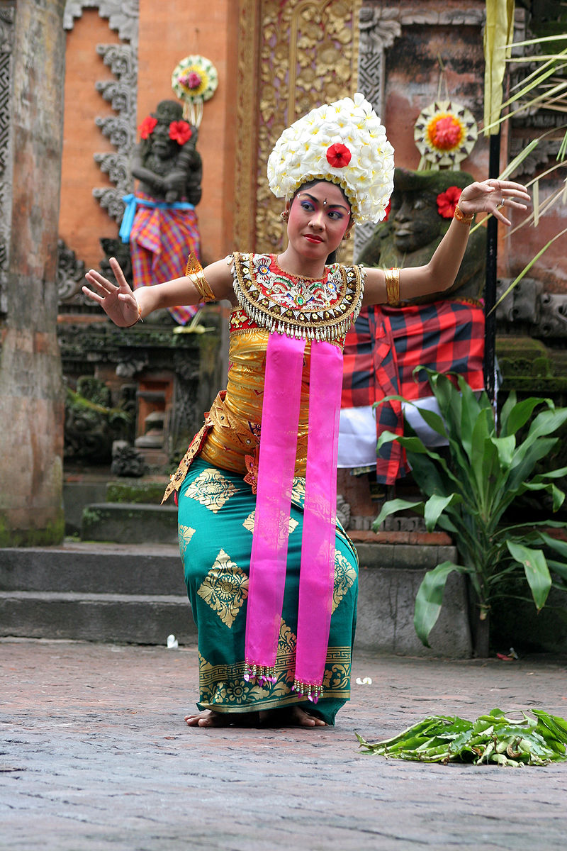
4.5. Japan
- Bon dance
- Buyō, typical dance of the Japanese geishas or dance artists
- Rimse (Ainu people)
- Kachāshī (Okinawa)
4.6. Korea
- Nongak
4.7. Malaysia
- Zapin[2]
4.8. Nepal
- Tamang selo
- chhokara dance
- Khyali dance
- Maruni dance
- Deuda dance
- Chaulo dance
- DhanNach
- Madikhole dance
- Phagu dance
- Sorathi dance
- Sakela (Chandi) dance
- Singaru dance
- Tarbare Dance
- Bajrayogini dance
- Charitra dance
- JatJatin dance
- Charya Dance
- Hanuman dance
4.9. Philippines
- Cariñosa
- Tinikling
- Tiklos
- Singkil
- Maglalatik
- Binasuan
- Pandanggo
- Pista
- Kuratsa
- Magkasuyo
- Sayaw sa Bangko
- Itik-itik
- kuratsa
- La Jota Moncadena
- Balse Marikina
- Paraguanen
- Kuntao Silat Amil Bangsa
- Benjan
- Lerion
- Kalesa
4.10. Taiwan
- Bamboo dance (Amis people)
5. Latin America
- Baile Folklorico (Mexico and Central America)
6. Oceania
- Hula (Hawaii)
- Haka (New Zealand)
7. Gallery

Kyushtdepdi. By Kerri-Jo Stewart from Vancouver, Canada - Independence Day Parade, CC BY 2.0, https://commons.wikimedia.org/w/index.php?curid=23131065
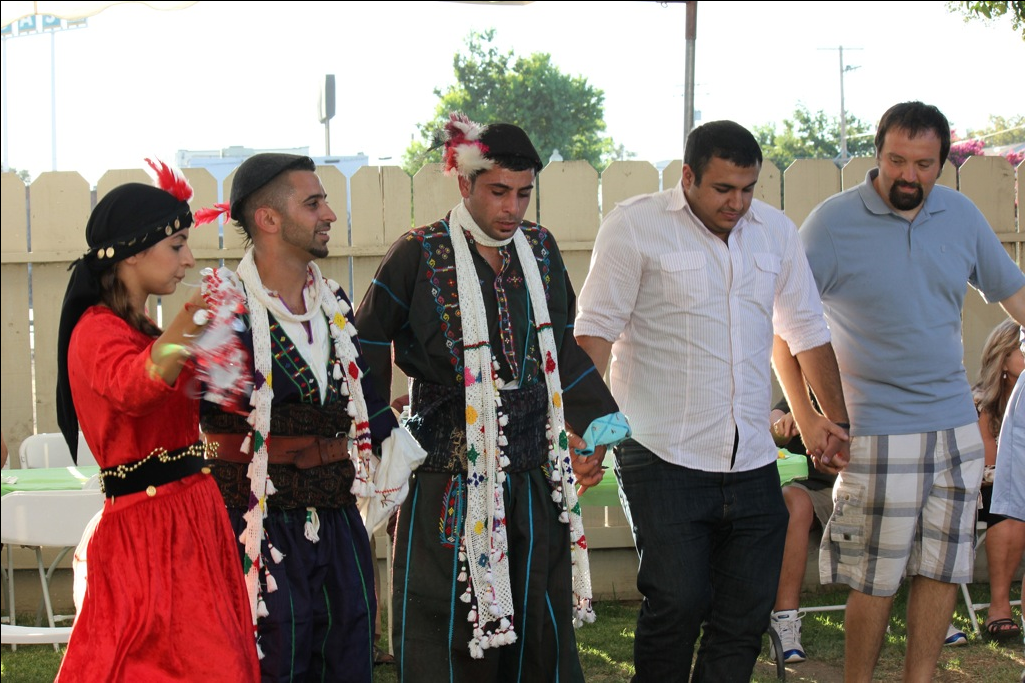
Assyrians dancing khigga. By User:Meganesia - Own work, CC BY-SA 3.0, https://commons.wikimedia.org/w/index.php?curid=47199709
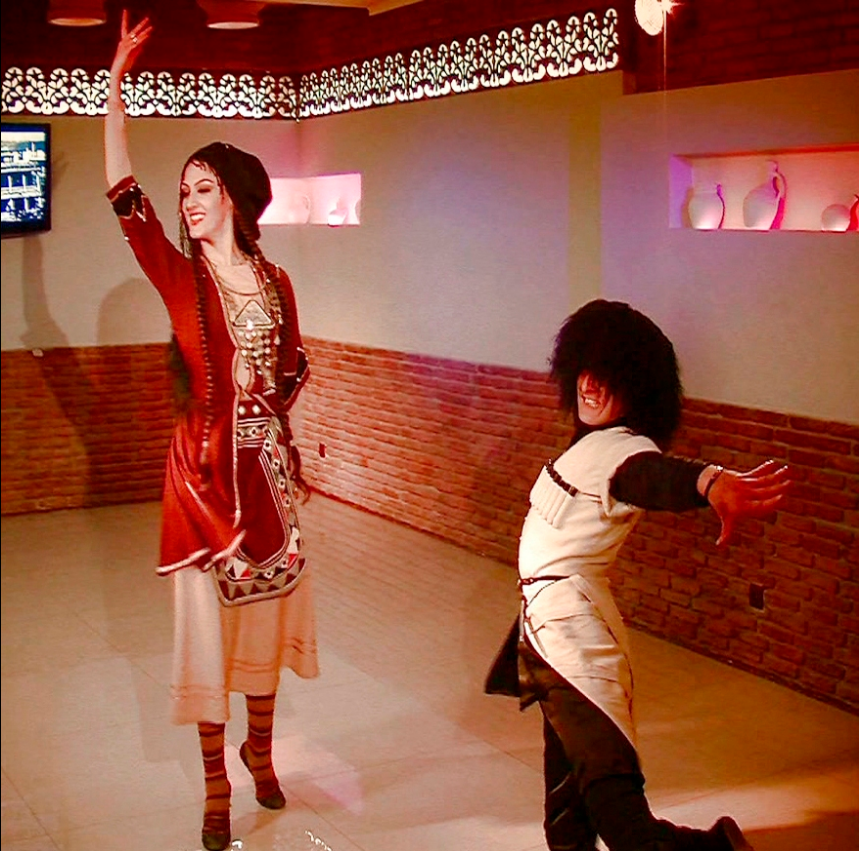
Mtiuluri. By GeorgianFolk - Own work, CC BY-SA 3.0, https://commons.wikimedia.org/w/index.php?curid=13269506
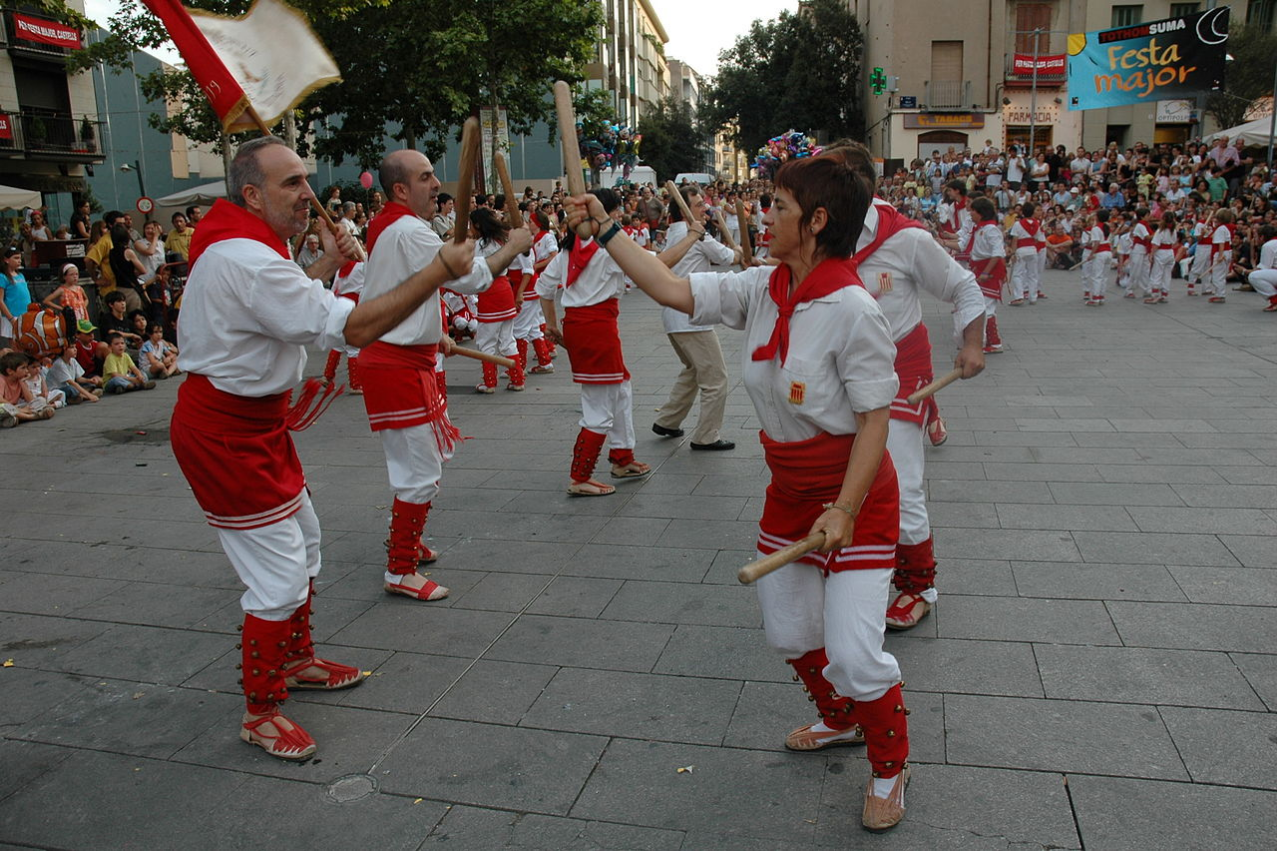
A Ball de bastons stick dance from Catalonia. CC BY-SA 2.5, https://commons.wikimedia.org/w/index.php?curid=976335
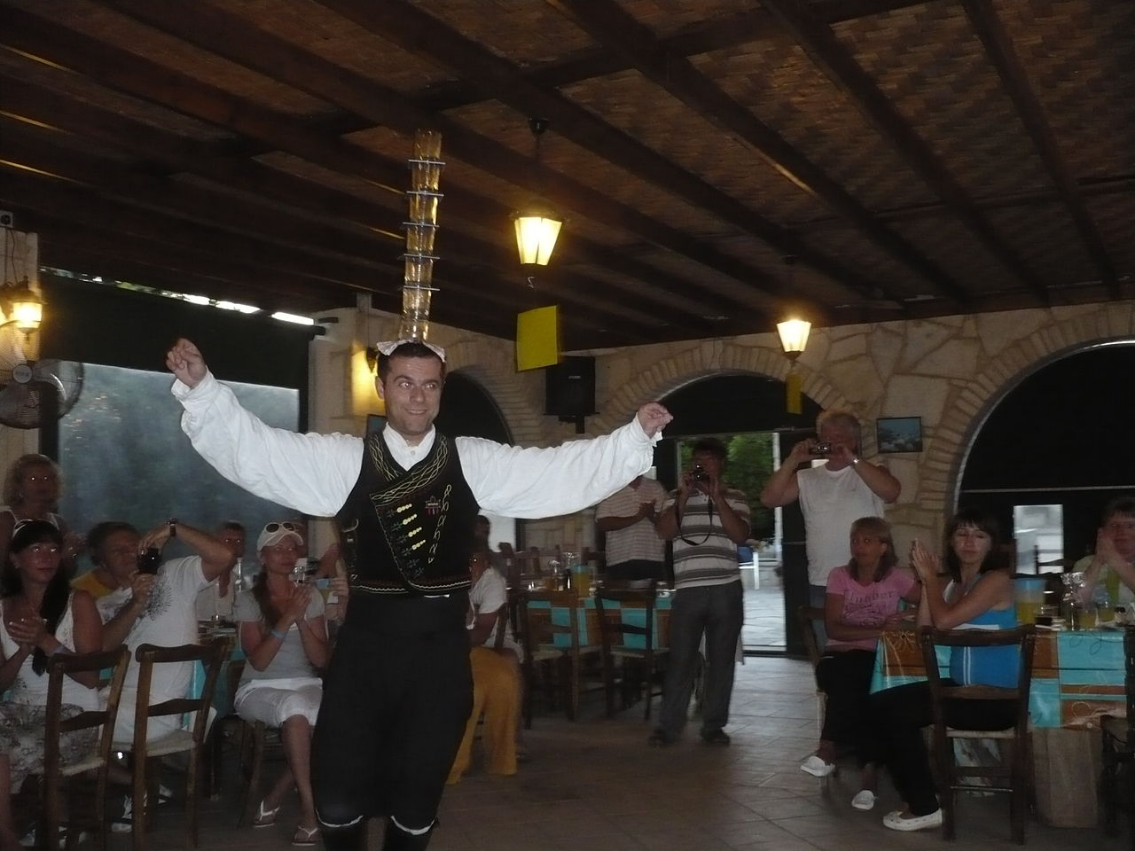
Cyprus folk dance with glasses in Paphos. By OldMuzzle - Own work, CC BY-SA 3.0, https://commons.wikimedia.org/w/index.php?curid=15802444
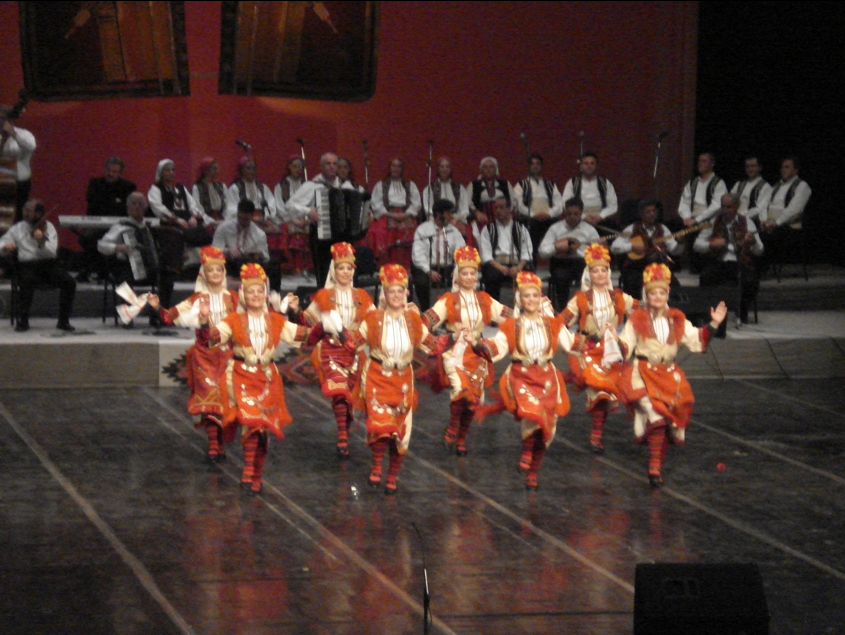
Macedonian female folk dance, Tresenica, performed by Tanec. Public Domain, https://commons.wikimedia.org/w/index.php?curid=79360803
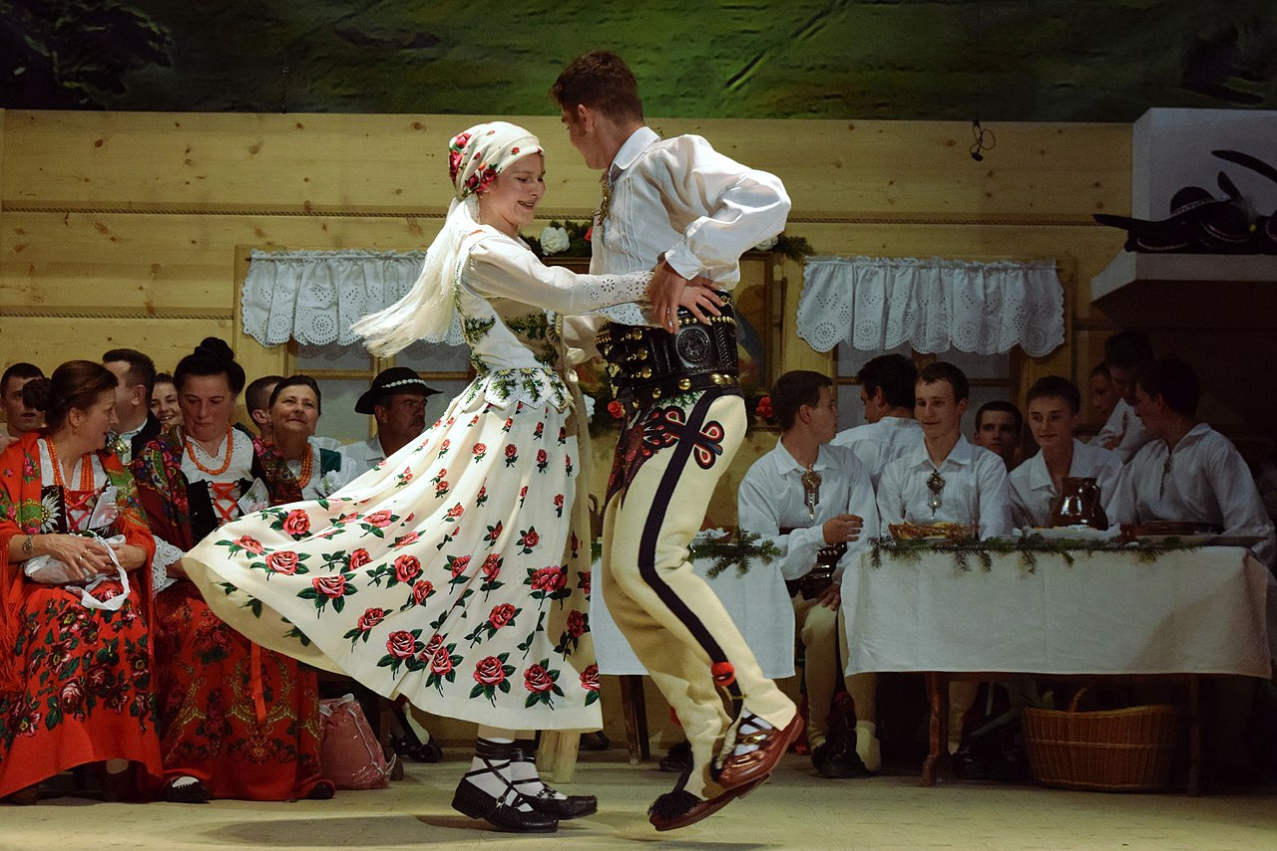
Podhale Gorals dancing. By Marta Malina Moraczewska - Own work, CC BY-SA 4.0, https://commons.wikimedia.org/w/index.php?curid=50790360
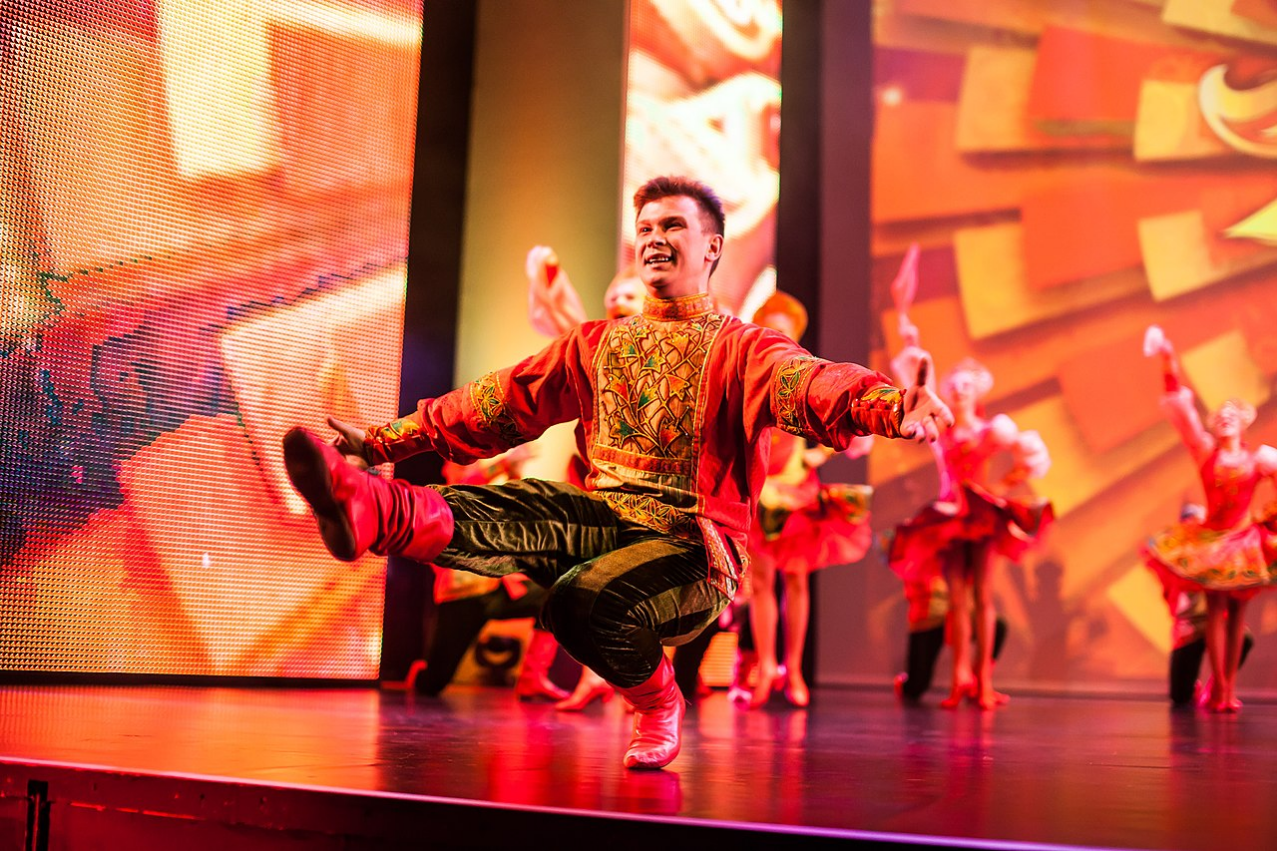
Traditional Russian squat dancing. By ImagineCup - https://www.flickr.com/photos/imaginecup/9266360337/, CC BY 2.0, https://commons.wikimedia.org/w/index.php?curid=33223692
References
- V@DIM. "Golden age". http://www.turkmenistan.gov.tm/_eng/?id=530.
- "Tarian Zapin – Yayasan Warisan Johor". http://www.ywj.gov.my/tarian-zapin/.




